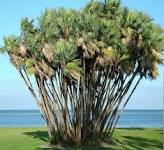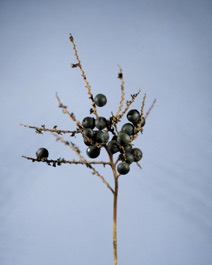The conservancy that I’m developing in West Delray Beach, FL, has one of the largest and best-curated palm tree collections in the world, as well as a growing collection of outdoor sculptures, a traditionally styled Japanese tea house, a stock of African cycads, and dozens of other exotic plants and trees.
Here’s one of the palms:

The Everglades Palm
Also known as: Paurtois Palm and Madeira Palm
Binomial name: Acoelorrhaphe wrightii
We have several large species in the Florida section of the park. I like them because (1) they are native to Florida, (2) they are a clustering plant, which makes me think of the jungle, and (3) they are a monotypic genus, which is pretty rare. (A monotypic genus is one with only a single species.)
The Everglades Palm is native to southern Florida, as I said, but it’s also native to Central America, Colombia, and the Bahamas.
The trunks are covered in fibrous matting. The petioles (leaf stems) are long and orange with sharp teeth along the edges. The leaves are palmate (fan-shaped). A distinctive feature of the Everglades Palm is the production of small green flowers that turn into pea-sized fruit. (Like you see below.)

The ripe fruit of an Everglades Palm
The fruit starts out orange and turns black when mature.
For more information about Paradise Palms, click here.
 MarkFord
MarkFord